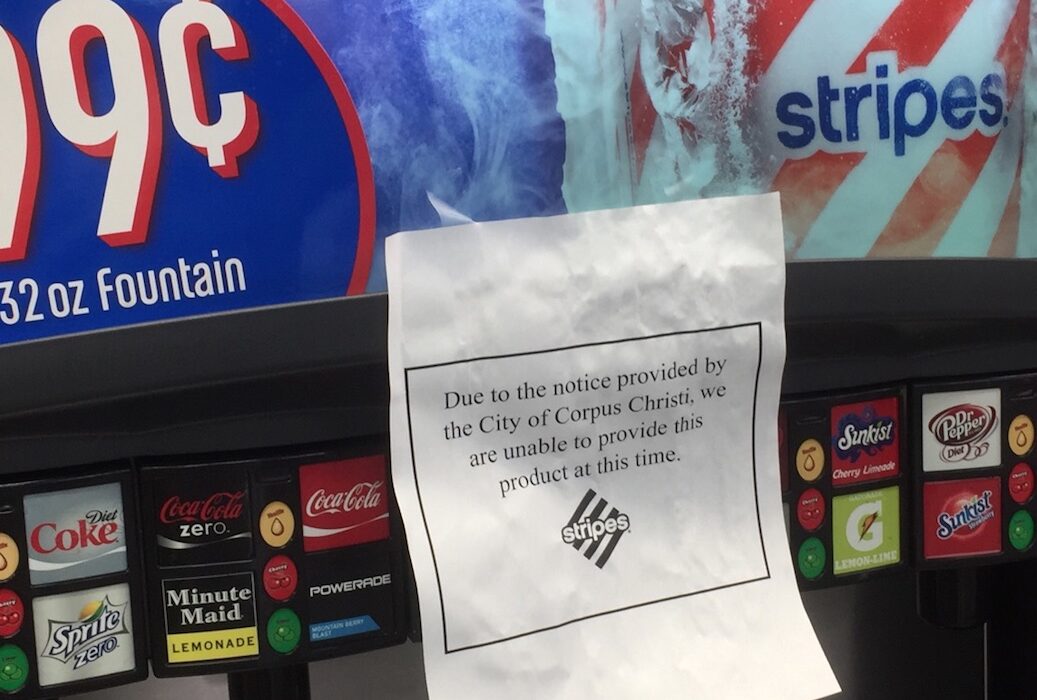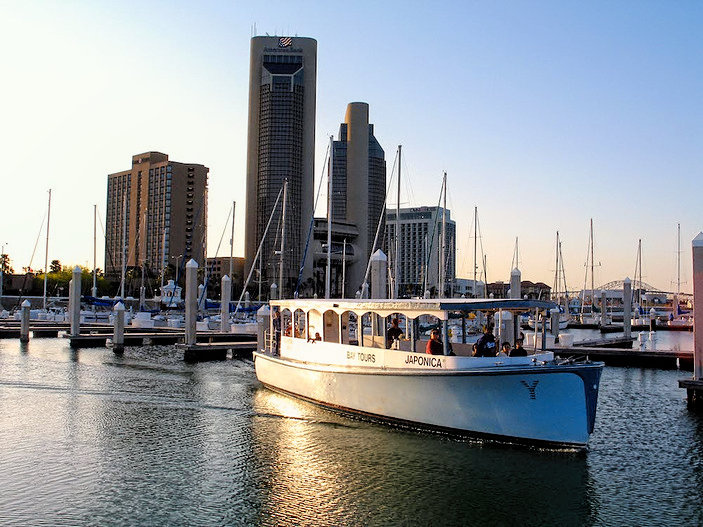
The sign on a Stripes soda machine on SPID that can no longer be used because of the boil water notice. May 19, 2016, was the seventh day of the notice. Photo by Roland Chiapoco
Now in it’s seventh day, the boil water notice is expected to last at least another 10 days, even with a new chlorination process that began Thursday, May 19. The process of using free chlorination in the water system, which must be approved by the Texas Commission on Environmental Quality, takes 30 to 60 days to fully implement, but should allow for a lifting of the boil water notice within about 10 more days.
City officials held a press conference Wednesday evening, May 18, to assure city residents they were doing everything they could to provide safe drinking water and have the ban lifted. Progress reports will be announced daily at 2 p.m. until the situation is resolved.
"We thought it was time to come face to face to share a status report," said Deputy City Manager Margie Rose. “The citizens deserve to know what happened.”
Rose, who is expected to be named interim city manager at next Tuesday’s city council meeting, said the city takes full responsibility for the condition of the city’s water. City manager Ron Olson resigned his position Tuesday morning citing the water problem as one of several reasons he decided to leave.
At the press conference, Rose also announced that the city would be hiring outside investigators to find some answers and provide long term solutions.
The short term solution for a problem that involves operational issues as well as infrastructure weaknesses, includes using a different disinfectant, which may cause water to appear cloudy and smell like a swimming pool for about 30 to 60 days, officials said.
With approval from TCEQ, the city will use a free chlorine process similar to “shocking” a swimming pool to kill bacteria which continues to show up in spot tests taken in certain areas of the city. No deadly bacteria, such as E.coli, has been found, officials report. The city tests 98 different locations every two weeks. More frequent testing was discussed at the May 17 city council meeting as a possible way to prevent future boil water notices.
Free chlorine is commonly added to water systems when ammonia or organic nitrogen is found. Recent flooding conditions have washed nitrates from surrounding fields into the water system, reported assistant city manager Mark Van Vleck during the city council meeting. The biggest culprit is Lake Texana, one of the city’s water sources. Free chlorine contains both hypochlorous acid and hypochlorite ion or bleach.
LONG TERM PROBLEMS
Two other reasons for this recurring problem — this is the third boil water notice in 10 months — involve contractors and city workers leaving valves closed and the condition of the underground pipes. Van Vleck carried a corroded cast iron pipe from member to member during the May 17 meeting showing the build up and corrosion inside.
“That’s gross,” said council member Lucy Rubio.
“No amount of flushing will clear this out,” Van Vleck said. The only solution is to replace the 230 miles of cast iron pipe that was originally laid in the 1950s, he said.
Van Vleck took some heat from council members wanting to know what could be done about the valves.
“I suggest we check them twice,” said council member Mark Scott of the valves. “This is something we need to be better at.”
Members also suggested fining contractors who close valves and do not reopen after their work is done.
“We thought it had improved,” Van Vleck said. “We are working on how to make it more painful when they do that.” He acknowledged, however, the near impossibility of finding culprits to fine.
“Trying is not good enough,” said council member Chad Magill, who suggested an operational manual and an electronic tracking system for valves.
Meanwhile, citizens, particularly business owners affected by the boil water notice, have made their opinions known to elected officials, including a group that started an online petition. About 1,000 signatures were collected in four days demanding new management for the city water department.
Local businesses are showing the strain as well, particularly the city’s five Starbucks locations. Drive in windows, which typically brings in the most business, are closed. The coffeeshops are open, however, for selling pre-packaged food and drinks and retail items. Customers are also still welcome to come in and use the free wi-fi.





